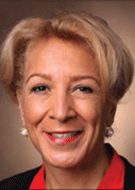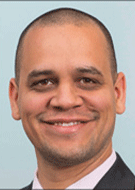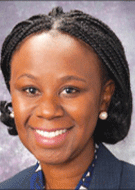Radiology’s Role in Overcoming Health Care Disparities for Children
From small changes to broader initiatives, radiologists are making a difference



This is the second in a series of articles addressing inequity in health care and solutions radiology can implement. Read part one, part three and part four. View the health care equity infographic for details on how RSNA is working to promote diverse representation across the profession and within its leadership
While closing the gap in health care disparities is essential for all patients, it is especially critical for one of our most vulnerable populations: children. Because children’s health care is often directly linked to that of their parents, disparities for both are rooted in many of the same factors. Increasingly, experts are recognizing the significant role socioeconomic determinants play in access to quality health care and health outcomes across age groups.
“In marginalized populations, access to health care for children is a serious problem,” said pediatric radiologist Stephanie Spottswood, MD, MSPH, Emerita Professor of Radiology at Vanderbilt University, who served as co-chair of the Society for Pediatric Radiology’s (SPR) Committee on Diversity and Inclusion.
Race/ethnicity, poverty, lack of education, geographic location/neighborhood and lack of transportation are among the factors that may impact a child’s access to care, according to a growing body of research.
A 2021 JAMA Network Open study found that Black and Hispanic children entering the Emergency Department (ED) are less likely than white children to receive X-rays, CT scans and other diagnostic imaging tests. The multicenter, cross-sectional study comprised more than 13 million pediatric ED visits to 44 children’s hospitals between 2016 and 2019.
Of the diagnostic imaging tests performed, white children received 33.5%, Black children received 24.1% and Hispanic children received 26.1%, results show. Such findings are consistent to what Dr. Spottswood, a longtime advocate for diversity in radiology, has seen over the years.
“Health inequity is a complicated issue with many root causes,” Dr. Spottswood said. “Problems could stem from something as simple as not having computer access to contact a health care provider, which is common in poorer communities.”
And factors are often intertwined. For example, Black, Hispanic and Native American children may live in poorer neighborhoods with fewer jobs and higher crime rates. Access to public transportation could be limited, causing missed appointments. A parent might not be able to take off work when a child is sick. There may be a language barrier. Any or all of these obstacles could be at work.
While lack of insurance is certainly a factor, health care inequities exist in such populations even after accounting for insurance adjustments, according to the Institute of Medicine Report, “Unequal Treatment: Confronting Racial and Ethnic Disparities in Health Care.”
So how can health care — specifically, radiology — help break down barriers to health care for children? While this isn’t a one-answer-fits-all problem, radiologists are tackling the issue on a number of fronts, from small changes to broader initiatives.
Dr. Spottswood elaborates on the socioeconomic determinants that can affect pediatric radiology in this RSNA News video:
Small Changes Make a Big Difference
While the issue of health care disparities may seem overwhelming, the important thing is to start anywhere, said Efrén J. Flores, MD, assistant professor of radiology at Harvard Medical School and officer of Radiology Community Health Improvement and Equity at Massachusetts General Hospital, Boston.
“There are so many cases where any assistance we can give is better than what patients were receiving before,” Dr. Flores said. “Pediatric radiology plays a critical role in addressing health disparities among children, which will have an impact in their overall well-being as adults.”
Dr. Flores, who was born and raised in Puerto Rico, identifies with parents and children from underserved populations and is dedicated to helping them.
“It’s more than a passion, it’s my mission to ensure that no patient is left behind,” he said. “What keeps me up at night is thinking about those patients who are not even connecting with the health care system.”
Even small changes can help. One example: make sure patient instructions are in a language and at a literacy level all patients can understand. Parents who understand health care procedures and trust the physician have more incentive to seek health care for their children, he said.
The imaging center also began assisting patients in overcoming transportation barriers to care by offering non-emergency medical transportation through a rideshare program. Since its inception, this program has helped many patients keep their appointments and is now part of the clinic’s assistance programs to better serve those in need of transportation assistance.
The imaging center also began offering patients a ride to their appointments through a rideshare partnership with Lyft in 2018. That program helped about 300 patients keep their appointments and is now part of the clinic’s annual budget.
Overcoming Unconscious Bias
Other solutions to overcoming disparities in pediatric health care are more complicated and deep-seated. A good place to start is by taking a hard look at unconscious bias, which Dr. Spottswood says is at the root of the problem.
“Unconscious bias is a major factor in health care disparities,” she said. “If you view a particular group a certain way based on your upbringing, whenever you see someone from that group, you are going to treat that person differently. And you don’t even know you’re doing it.”
While reversing such deeply ingrained conceptions won’t happen overnight, educating radiologists through programs such as unconscious bias training can make inroads to progress.
“Radiologists need to make themselves aware of their own biases, and education plays a huge role,” Dr. Spottswood said. “We need to learn about health care disparities and how they impact the whole health care system.”
Added Dr. Flores: “Expanding our knowledge of how different sociodemographic and clinical factors influence access to care among children is fundamental to bridge health disparities and improve equitable access to radiology care.”
Although radiology traditionally ranks low in workforce diversity compared to other specialties, radiologists are also in a position to turn that around, said Chido Vera, MD, assistant professor in the Department of Radiology at Children’s Hospital of Pittsburgh and chair of the SPR Committee on Diversity and Inclusion.
“One advantage in radiology is that we interact with nearly every specialty and nearly every patient who comes through the hospital gets some type of imaging exam,” Dr. Vera said.
The broad reach makes it even more important for radiologists to be representative of the diverse populations they serve, she added.
“You want to have the trust and confidence of your patients and for many people that means having someone who looks like them and who can relate to them so they feel comfortable describing their symptoms and seeking care,” Dr. Vera said.
Dr. Vera is leading an effort to publish a mini symposium of work on diversity and inclusion in SPR’s journal Pediatric Radiology later this year with topics ranging from workforce diversity to patient care.
Dr. Spottswood and her colleagues at Vanderbilt spend time in the Nashville community lecturing undergraduate, high school and grade school students to explain radiology and discuss how it can be an exciting career path.
“It’s about creating a pipeline, getting people interested early,” Dr. Spottswood said. “Once you capture the interest you need to make sure they are adequately prepared and successfully mentored.”
For More Information
Access the study, “Racial and Ethnic Differences in Emergency Department Diagnostic Imaging at US Children’s Hospitals, 2016-2019,” at jamanetwork.com.
Access Spanish language patient resources at RadiologyInfo.org, a public information website produced by RSNA and ACR.
Access the RSNA 2020 Special Interest Session “Exposing Our Blindside and Overcoming Unconscious Bias” on demand until April 30 at RSNA2020.RSNA.org.
Access RSNA annual meeting courses on diversity, equity and inclusion at RSNA2020.RSNA.org.